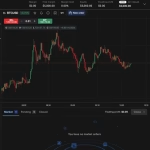Search engine optimization often starts as a scrappy, iterative effort—one new page, one keyword cluster, one backlink at a time. Yet when a brand expands into new products, regions, or audience segments, those early tactics can buckle under the weight of scale. Leaders suddenly face sprawling URL structures, competing priorities, and mountains of performance data. The challenge becomes clear: How do you expand reach without diluting the strategy that got you there? The answer lies in marrying meticulous planning with smart systems so that growth amplifies results rather than scattering them.
Anchor Success in a Robust Technical Foundation
Before scaling any SEO initiative, you need infrastructure that can handle increased traffic and complexity. That means lightning-fast load times, mobile-first design, and a crawlable architecture that makes sense to both users and search crawlers. Enterprises should conduct regular technical audits, checking for broken links, duplicate content, and inefficient scripts. Addressing these issues before they snowball prevents performance bottlenecks that undermine visibility. A sturdy foundation lets every new campaign stack neatly on top instead of sinking into technical debt. Equally important, a strong tech foundation ensures consistency across global platforms, allowing teams in different regions to operate from the same SEO baseline.
Create Modular Content Systems, Not One-Off Posts
When teams publish content ad-hoc, quality and cohesion inevitably suffer as volume grows. Big brands counter this by developing modular content frameworks—templates, style guides, and component libraries that ensure consistency while speeding production. Editorial calendars map content to each stage of the customer journey rather than to isolated keywords. This method keeps messaging aligned with brand voice and user intent, even when dozens of writers contribute. By reinforcing core themes in every asset, you maintain strategic focus as the library scales into the thousands. Regular content audits also help identify redundant or outdated material that can be consolidated for better performance.
Leverage Data to Prioritize, Not Paralyze
Scaling magnifies analytics: suddenly there are far more pages, queries, and competitors to watch. Without a disciplined approach, teams drown in dashboards and miss actionable insights. Winning organizations identify a concise set of key performance indicators tied directly to business outcomes—such as revenue from organic sessions, cost savings from SEO versus paid search, or share of voice for target topics. They automate routine reporting and reserve human analysis for anomalies and opportunities. This balance prevents analysis paralysis and ensures data guides strategy rather than overwhelming it. In mature SEO programs, data becomes not just a resource, but a competitive differentiator.
Automate the Repetitive, Elevate the Strategic
Manual title-tag updates or weekly crawl error checks might suffice for a small site, but they break down at scale. Automation tools can generate schema markup, monitor status-code anomalies, and surface internal-link gaps in real time. Freed from repetitive tasks, SEO specialists focus on higher-order initiatives: refining content architectures, testing new SERP features, or coordinating with product teams ahead of big launches. Many organizations bring in an enterprise seo agency to configure and manage these platforms, ensuring automation enhances rather than complicates established workflows. In this environment, automation is not about shortcuts—it’s about multiplying the impact of smart human work.
Build Cross-Functional Bridges Early
Search success no longer sits solely with the marketing department. Developers control site performance, designers influence engagement signals, and customer-service teams uncover new keyword opportunities through user questions. As scale introduces more stakeholders, alignment becomes both harder and more critical. High-performing brands institute recurring cross-functional stand-ups, shared OKRs, and transparent roadmaps so every team sees how its work affects organic visibility. This culture of collaboration keeps the SEO strategy concentrated, even as headcount and project lists balloon. It also leads to faster implementation cycles, with fewer delays between strategy and execution.
Maintain Agility Through Iterative Governance
Governance can sound like bureaucracy, but at scale it protects focus. Documented guidelines for URL structures, canonicals, and localization workflows keep thousands of pages from drifting into chaos. Crucially, the best governance models remain iterative: they evolve with algorithm updates, new technologies, and shifting business goals. Quarterly playbook reviews ensure rules empower teams rather than constrain them. An experienced enterprise seo agency often facilitates these sessions, bringing external perspective and fresh best practices to the table. By embracing agile governance, large organizations can remain nimble without losing their strategic anchor.
Scale With Purpose, Not Just Volume
Expansion should amplify what already works, not replace it with noise. By reinforcing a solid technical backbone, deploying modular content systems, and letting data steer priorities, brands can enlarge their search footprint without losing strategic clarity. Automation and cross-functional cooperation further sharpen that focus, while adaptive governance keeps the entire machine running smoothly. Organizations that embrace this disciplined approach—whether in-house or alongside an enterprise seo agency—find that scale isn’t a threat to focus at all. Done thoughtfully, it’s the catalyst that turns a strong SEO program into a market-dominating force.






